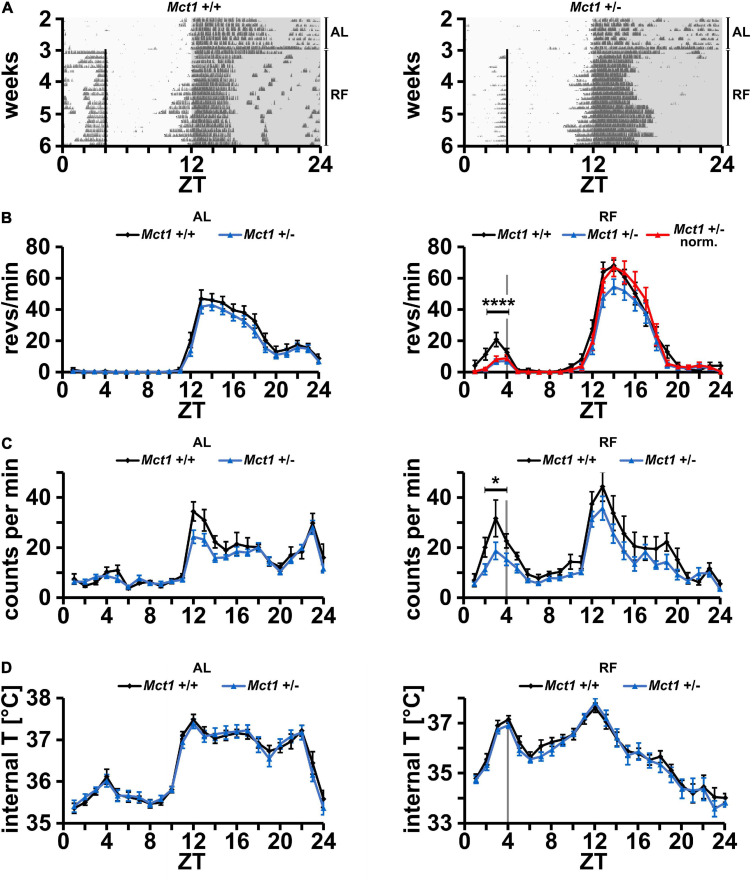FIGURE 1.
Mice heterozygous for Mct1 display reduced FAA but have a normal temperature profile. (A) Examples of wheel-running actograms of Mct1+/+ (left panel) and Mct1+/– mice (right panel) under ad libitum (AL) and daytime-restricted feeding (RF) conditions. The vertical line at ZT4 indicates the time of food access. (B) Quantified wheel-running activity plots under AL (left panel) and the last week of RF (right panel) conditions. Food anticipatory activity (FAA) under RF is significantly reduced in Mct1+/– (blue) and normalized Mct1+/– (red) compared to Mct1+/+ mice (black). Activity was normalized to dark phase activity of controls (n = 13–15, 2-way ANOVA, ****p = 4.89 × 10–4, F = 13.22). (C) Quantified general activity plots under AL (left panel) and RF (right panel) conditions. FAA under RF is significantly reduced in Mct1+/– (blue) compared to Mct1+/+ mice (black) (n = 8–9, 2-way ANOVA, *p = 0.01, F = 7.02). (D) Internal body temperature profiles under AL (left panel) and RF (right panel) conditions. No differences were observed between the genotypes under both AL and RF conditions (n = 8–9, 2-way ANOVA, p > 0.05). Error bars represent the standard error of mean.

